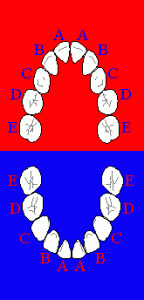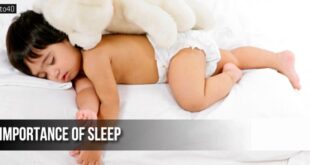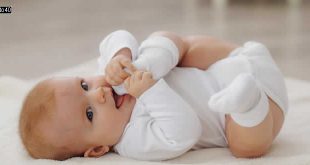 Common signs of teething are drooling, gnawing, biting, and general fussiness and irritability. Your child may feel slightly feverish at times, but no further serious illness should be attributed to teething. He needs more cuddling because of his discomfort, he may wake up more often at night and may want to sleep next to you. All this is part of his pain and discomfort and he should be comforted and solaced.
Common signs of teething are drooling, gnawing, biting, and general fussiness and irritability. Your child may feel slightly feverish at times, but no further serious illness should be attributed to teething. He needs more cuddling because of his discomfort, he may wake up more often at night and may want to sleep next to you. All this is part of his pain and discomfort and he should be comforted and solaced.
Mothers are anxious about teething and from the time the baby is three months old they want the doctor or the nurse to tell them whether the baby is teething. You will find this out when the teeth erupt because you will be able to see them.
The first teeth are the lower central incisors which appear between six to nine months. The gums look a bit swollen for a few days and then a tiny white spot appears which is the tooth. During this period, after consulting a clinic or a doctor, some pain reliever may be given to relieve discomfort. Probing around in the baby’s mouth with your finger to see if the teeth are there is a bad practice and may lead to infection.
Over the next three to four months, the teeth appear with great rapidity: the lower central pair, the upper central pair, and then two more on either side in the lower and the upper jaw making a total of eight incisors. Sometimes the pattern is changed and the outer incisors may erupt earlier than the central ones. The rest of the teeth erupt according to the chart below.
When Do Baby Teeth Erupt?
Upper
A — Central Incisors — 8 ∼ 13 months
B — Lateral Incisors — 8 ∼ 13 months
C — Canines (cuspids) — 16 ∼ 23 months
D — First Molars — 13 ∼ 19 months
E — Second Molars — 25 ∼ 33 months

Lower
A — Central Incisors — 6 ∼ 10 months
B — Lateral Incisors — 10 ∼ 16 months
C — Canines (cuspids) — 16 ∼ 23 months
D — First Molars — 13 ∼ 19 months
E — Second Molars — 23 ∼ 31 months
The entire set of 20 teeth are cut by the time your child is two and a half years old. These are called the primary teeth. Sometimes, teething may be delayed and your child may not have any teeth till one year. Do not get worried and stuff him with calcium, vitamins and various tonics. He will cut his teeth when he is ready for it.
The foundation of the primary teeth is laid while the baby is still in the womb so the health and nutrition of the mother during pregnancy may have some effect on their development. Certain drugs, like tetracycline taken by the mother during pregnancy, can be deposited in these teeth buds, staining them yellow. Tetracycline should therefore be avoided during pregnancy.
Diarrhoea and Teething
 There is a widespread belief that teething leads to diarrhoea and mothers want some medicine that would ease the process of teething and prevent diarrhoea. The market is full of teething powders, drops and syrups to aid teething. Avoid them.
There is a widespread belief that teething leads to diarrhoea and mothers want some medicine that would ease the process of teething and prevent diarrhoea. The market is full of teething powders, drops and syrups to aid teething. Avoid them.
What the baby needs is a little more comfort and cuddling when uncomfortable or a little paracetamol when in pain. The baby likes to chew on things such as a rubber or plastic toys because his gums feel sore and itchy. It is also the time in baby’s development when he wants to put everything into his mouth to explore it. As a result, all kinds of things, none to clean, go into his mouth and may cause diarrhoea.
Try to ensure a clean environment for the baby as far as possible and pay special attention to things that go into his mouth, including his own fingers and nails. It is advisable to give the baby something to chew on, such as a piece of toast or a carrot. Diarrhoea, if it occurs, is the result of infection and not teething. Mild diarrhoea will respond to a clean environment and extra fluids, but if it persists, you will have to consult a doctor.
Care of the Teeth
A good diet will provide minerals needed for the teeth. Also, by keeping the body healthy, it will help the mouth to fight bacteria. Make sure that the food is not be too soft after the first few months. Chewing food massages the gums and cleans out food particles from between the teeth. Sugars and carbohydrates should be limited to meal times. The teeth should be cleaned immediately after eating sweet snacks such as cookies or chocolates in between meals.
By the age of one and a half to two years, the teeth should be cleaned twice a day using a soft toothbrush. Toothpaste is not necessary to begin with. Later, any pleasant-tasting toothpaste can be used. The mouth should be rinsed after eating anything. This age-old Indian habit needs to be encouraged.
Caries or Cavities
 Caries is very common even in small children and needs attention at all ages. The belief that the baby teeth are going to drop off and therefore do not need attention is wrong. Caries can lead to infection and pain and can cause infection of the permanent unerupted teeth.
Caries is very common even in small children and needs attention at all ages. The belief that the baby teeth are going to drop off and therefore do not need attention is wrong. Caries can lead to infection and pain and can cause infection of the permanent unerupted teeth.
What causes caries is not very clear but sweets seem to lead to it. Harmless germs in the mouth multiply rapidly because of the sugar in the sweets, and these gradually destroy the teeth enamel. Soon, the teeth develop cavities, which gradually enlarge. Food particles get into this cavity and accelerate the process of infection and destruction of the tooth. The sugar (carbohydrates) in chapatti and rice also acts the same way. Hence the importance of cleaning the mouth after meals. Fruits such as apple, pear or orange are very good cleaning agents and it is a good habit to end meal times with a fruit.
Permanent Teeth
By the age of six to seven years, the first baby teeth begin to drop off starting with the central incisors. The tooth becomes loose and falls off without being painful. Most families observe a ritual of hiding teeth. The child is asked to keep his tooth under his pillow, which is replaced with money by the elders. As a result, the child does not get upset about the loss of his tooth and the wide open space in his mouth.
If the teeth do not erupt in a symmetrical manner, are too crowded, tend to protude, or are badly aligned, consult a dentist. Such problems may cause a lot of embarrassment to the child in later years and a good orthodontist can work wonders.
 Kids Portal For Parents India Kids Network
Kids Portal For Parents India Kids Network






